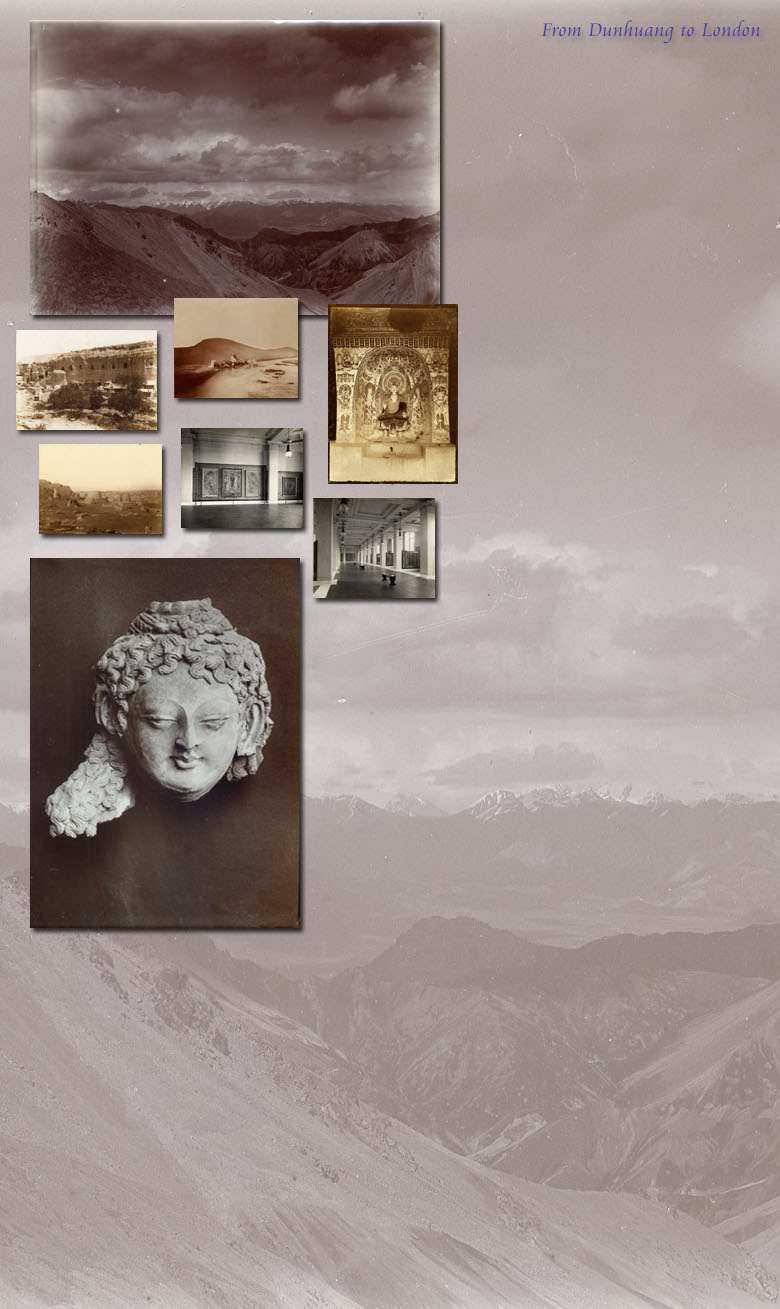|
  After
his strenuous work in Dunhuang, Stein made his way towards the oasis of Anxi.
There he visited the cave temples of the Ten Thousand Buddhas (Wanfoxia) where
there are less cave temples, but their frescoes are just as beautiful as
those in Qianfodong. After
his strenuous work in Dunhuang, Stein made his way towards the oasis of Anxi.
There he visited the cave temples of the Ten Thousand Buddhas (Wanfoxia) where
there are less cave temples, but their frescoes are just as beautiful as
those in Qianfodong.
Later he began his cartographic survey in Nanshan, followed by a second winter
excavation season in the Tarim Basin. From Anxi to Karashahr, for a distance of
1400 kilometers, he followed the military and trade routes used from the Tang
period onwards by China to enter into contact with the West. In Hami and Turfan he
surveyed important sites. In December he started to investigate the
Buddhist sanctuaries of Ming-oi, to the south-west of Karashahr. After a visit
to Kuchar, he crossed the Taklamakan from north to south, heading to the direction
where the Keriya river is lost in the sand. This was a risky undertaking. In
1896 the Swedish geographer Sven Hedin had passed the same way from the south,
i.e. the end
of the Keriya, ensured of reaching the Tarim river, perpendicular to his route.
In the case of Stein, however, everything depended on whether he could keep his
bearings and the expedition could find some source of
water in due time. Finally, albeit with a much diminished water reserve, they reached the frozen river
in time.
After crossing the desert – which was of primary importance for his cartographic
survey –, Stein started new archaeological research in Karadong. Later he
unearthed a series of smaller Buddhist sanctuaries. Between Uch-Turfan and
Kelpin he worked on an unmapped field, discovering the ruins of watch-towers
confirming that the Chinese route towards Kashgar used to pass in this direction.
However, due to the increasing heat he had to call a halt to his work here. He returned
to Khotan, where the packing of the discoveries lasted for six weeks. He sent his
caravan of fifty camels with the valuable cases to India on August 1, 1908.
Later he set off with his Indian surveyor to the source of the Yurung-kash River, trying to penetrate into the hitherto unknown mountain from the east.
They had to climb the steep rocks of the Kunlun, at an elevation of more than 6000 meters,
in order to survey by triangulation and panorama photos the mountains around Yurung-kash. While surveying the way through the
Yangi-dawan, the New Pass, Stein
suffered an accident. The toes on his right foot were frozen, and had to be
amputated. He was taken for surgery to Ladakh, where he received medical
assistance in the Moravian mission of Leh. In January 1909, he arrived to Budapest from
where he left for London.
The processing of the huge material that arrived without problems to the
museums took a very long time. The popular description of the second
expedition, the Ruins of Desert Cathay was published in 1912. The
scholarly results of the expedition were summarized in the five volumes Serindia (1921).
The first, exclusive presentation of some of the items of the Stein Collection
was organized, with the participation of Stein himself, in 1910 in the British
Museum. The first public exhibition was organized in 1914, in the newly opened Gallery Edward VII.
Later,
Stein was accused of having illegally removed his findings. In reality, however,
he strived to save as many of the discovered objects as possible by transporting
them to museums where they would be professionally conserved
and made available to everyone.
. |

